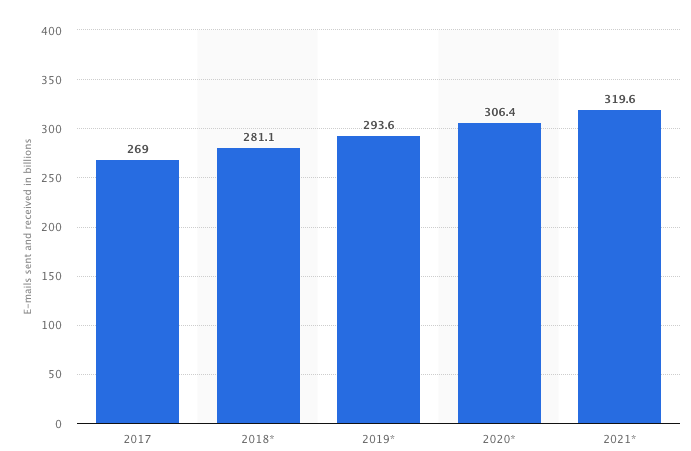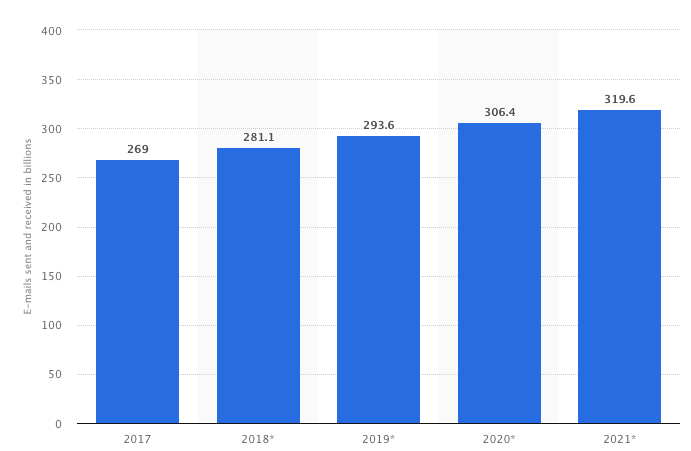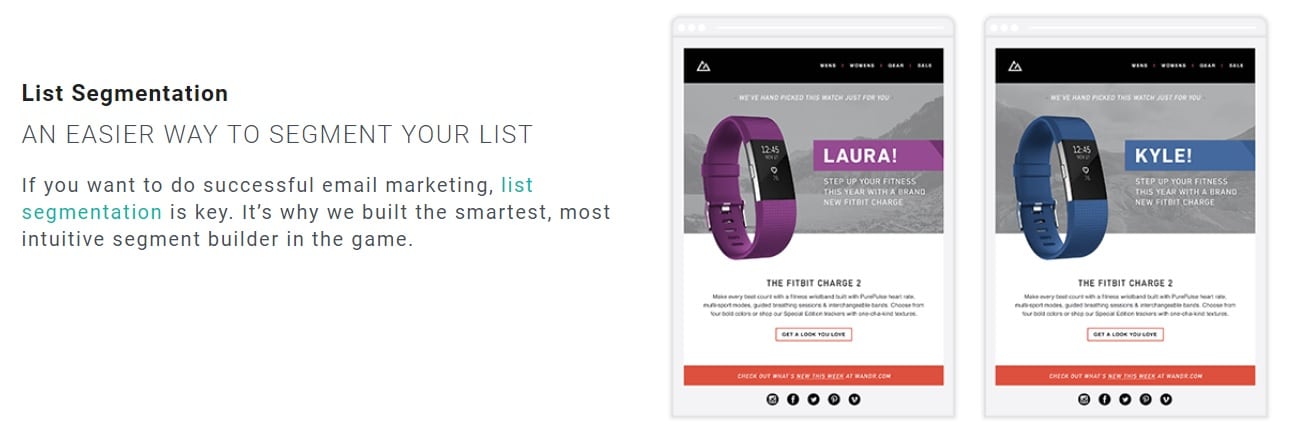How to align your strategy with social and email marketing
Marketers have a plethora of tools available to them in today’s digital world. Because of the amount and variety, it can be easy to focus on some more than others.
At major companies, tunnel vision can be common. This is especially true if you’re in a specialty department. Maybe you’re the sole force behind email marketing, or the head of a team dedicated entirely to social strategy.
The best way to get the most out of these tools is to coordinate the efforts together. It may seem better, at first, to let each avenue go its own way. However, generating synergy between them at the onset can do wonders for efficiency.
Rather than viewing social and email as separate entities means to achieve marketing objectives, you can combine them. The two then become key components of a central strategy. You put your marketing goals at the forefront and use coordinating tools to reach them.
Why social and email coordination is valuable.
Your audience isn’t just behind an inbox or logged into a social profile. Oftentimes, they’re everywhere. Sure, they may use specific platforms and prefer to receive communications there.
If you want a marketing approach that’s holistic, coordinating efforts across platforms is a wise idea. For one, both social and email are hugely popular. Email alone will see nearly 320 billion emails sent per day in just two years.
Source: Campaign Monitor
Social media may not be as popular as email, but it’s still an incredibly valuable tool for marketers. By next year, social media usage is expected to swell to 2.95 billion accounts.
Coordination between the two is valuable for a few main reasons:
- Brand development: What you say, and the way you say it, is much better amplified through two separate marketing avenues. The voice your company has can be echoed throughout email and social channels to help your audience truly understand it. Everything from your logos, to your slogans, to the information you convey will reach more people on two channels rather than one.
- Content usage: Ever made a crazy good graphic you’re really proud of? How about a video you want to show off to as many people as possible? The lifespan of a piece of content is longer than you’d think, and it’s even easier to keep it fresh when you’re sharing it across different platforms. Coordinating email and social channels lets you share your content in two places at once, helping you get more value from it.
- Combining the audiences: Your email list is a constant source of engagement opportunities. However, your social space has the potential to reach people you never even knew were out there. The benefit of coordinating content on both these channels is you can mix up the audiences. Bringing followers from one platform to another helps you boost engagement opportunities all around.
If you look at big brands that have a ton of social followers and well-received newsletters, you can easily tell there is some coordination going on. Hootsuite has had great success in combining email with Instagram.
Check your email statistics for guidance on social ads.
If you’re looking to coordinate these two platforms together, think about how you can use information from one to help another.
Let’s take your email list. You probably have this list segmented and set up for testing. As an experienced email marketer, you’re accustomed to generating data this way. It helps you learn about your audience—who they are, where they are, and most importantly, what they want.
So when you’re building social ads and deciding on parameters for your targeted ads, you already have data to go off of. Does a specific demographic gravitate toward your brand? Is there a particular product line you offer that gets more attention than others?
Use this information to guide you as you craft social ad campaigns. You can even use email testing to find out more about what kind of social ads to create.
Source: Emma
It’s true that the algorithms behind email platforms aren’t exactly the same as social platforms.
Yet, things like the efficiency of headlines are relatively the same throughout. If a subject line proves effective for email, that snippet could also make for a great tweet.
Schedule social posts to help increase newsletter signups.
While the previous entry showed how to use email to help give ad guidance on social media, you can also do the opposite.
Say your goal is to increase the length and quality of your email list. You may want to consider promoting it on your social profiles.
If you’re a longtime email marketer, you’ve probably been in this situation. You craft a beautiful newsletter. You painstakingly choose every image and every word until you’re completely satisfied with your creation. Then you find yourself saying: “I wish I could get this out to even more people.”
Remember how we mentioned that social profiles could help you get content to people you never even knew were out there? Maybe there’s someone who would love your newsletter but just hasn’t been able to find out about it in the vast reaches of cyberspace.
Consider promoting it on your social channels. Use screenshots, testimonials, and any special offers you tend to include. This can make people more excited about signing up, and help you funnel traffic from your social profiles to your email channel.
Upload your email list to your social channels.
There are some pieces of content you want shared in both places. You aren’t trying to get those outside of your email list to follow your social channels. You’re trying to make sure if someone is signed up for the former, they can get content on the latter.
Luckily, the world’s leading social profiles realize how worthwhile such a goal is. That’s why there are ways to upload your email subscribers to social channels. You can do it with Twitter’s tailored audiences, Facebook’s custom audiences, and LinkedIn’s matched audiences. The names may be a little different, but the premise is the same.
What’s the benefit of doing this? Say you have things you to promote as much as possible.
Getting them out to the same audience on multiple platforms could be ideal. Examples include:
- Important changes: Did your business implement a major change? Maybe an update to a user agreement or a major switch in product offerings? Make sure customers know by promoting it through multiple channels.
- Special offers: When you have a great deal for your customer base, you need to make sure they find out about it as soon as possible. Don’t worry about being overreaching here with the promotion. If the deal is good enough, customers won’t mind seeing it advertised in their inbox and on their feed.
- Limited-time Events: This one could fall into the category of special offers, but it may be related to an event rather than a sale. The same approach works here. Promote via email and social channels to make sure no one misses out before the clock winds down.
When you’ve spent so much time building up a great email list, you can bring those benefits (and the reach) to your social channels.
Link to your social channels in your newsletters.
This one may seem obvious for some, but there are many people who don’t understand the value of plugging your social channels in your newsletter.
Maybe there’s a good reason for this. Some people are worried about space. You can only say so much in emails. You don’t want to flood it with too many links or calls-to-action. You risk overwhelming the reader.
What’s the solution? Icons.

Source: Campaign Monitor
The above example takes things a step further. Notice how they don’t just have their icons by themselves. Some are associated with the action you’d be taking on that platform. We see they’re trying to get discussions going on Facebook and Twitter, for example.
If you’re linking to LinkedIn, you could use “join us” to invite others to be part of your network.
These are just some of the ways to link your social profiles to your email newsletters and make sure everyone is on board with both–or at least give them the chance to.
It’s handy to make sure if you’re sharing content on both platforms, everyone will be up to date on what you’re doing.
Wrap up
When you’re creating content, you shouldn’t just think of one platform. Think of your brand and its objectives as a whole. This makes it easier to build content that translates well to multiple channels.
Likewise, you can also think of your email list and your list of social followers as a general audience. Try to coordinate your targeting efforts in a way that reaches both.
Again, here’s how you can make social and email coordination all possible:
- Check your email statistics for guidance on social ads
- Schedule social posts to help increase newsletter signups
- Upload your email list to your social channels
- Link to your social channels in your newsletters
These steps will help you keep your channels coordinated. This can sometimes be the biggest challenge of all. The benefit is that, even if you have different people or different departments in the mix, you’re all focused together.
Learn how to improve social engagement with emails to get the most out of your marketing channels, and deliver the best experience to your audience.
MOST RECENT ARTICLES
Want to engage your audience and grow your brand? Try Emma's robust easy-to-use product today.















